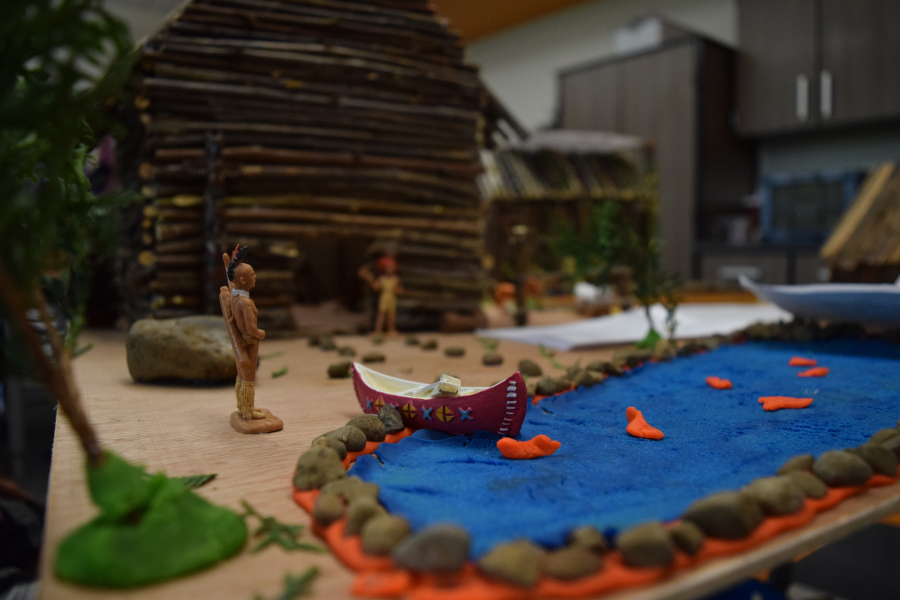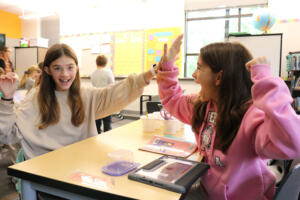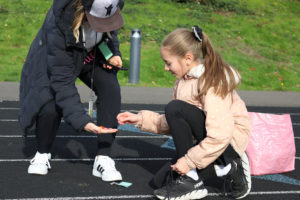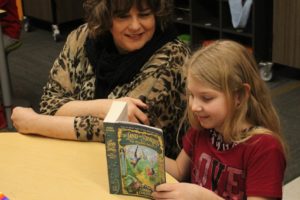A group of Columbia River Gorge Elementary School third-graders is on the path toward better understanding the Pacific Northwest’s indigenous culture.
In May, the students visited the Lelooska Cultural Center, met with members of the Lower Columbia Estuary Partnership and learned about the daily lives of Northwest Coast Native Americans, including members of the Haida, Chinook, Coast Salish and Tillamook tribes.
The lessons were a part of the third-graders’ language arts curriculum, explained Columbia River Gorge teacher Heidi Kleser, and were designed to help students connect modern-day practices to the lives and culture of the region’s first inhabitants.
“Learning about cultures allows us to share in the beauty of what we have in common (and) recognize patterns, as well as develop a respect and honor our differences,” Kleser said. “Students (were) also able to make connections, such as the name of their town, Washougal, and how it’s a Native American word too.”
The third-graders learned that cedar wood was a pivotal resource for Northwest Coast Native Americans, who used the material to construct plank houses, build canoes to catch salmon and even make clothing.




